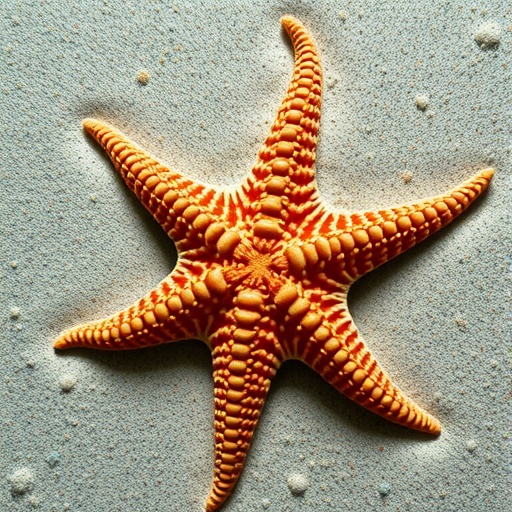Rising Concerns Over Neurotoxic Threats to Keystone Sea Stars in Coastal Ecosystems
For months, Southern California’s coastal waters have been battling an alarming bloom of harmful algae producing domoic acid (DA), a neurotoxin responsible for the mass mortality and intoxication of thousands of marine creatures. Such toxic algal events, while acute here, are far from isolated; troublesome DA outbreaks have become increasingly prevalent along both the United States’ West and East coasts. These episodes underscore a troubling ecological shift, as domoic acid, a potent amino acid neurotoxin naturally synthesized by certain algae, infiltrates marine food webs with growing frequency and intensity.
Domoic acid’s bioaccumulation pathway typically initiates with filter-feeding organisms such as mussels ingesting toxic algae. As these filter feeders concentrate DA, it ascends trophic levels, ultimately impacting apex and keystone species essential for maintaining community structure and biodiversity. While significant research has explored DA’s detrimental effects on marine vertebrates, notably birds and mammals, the influence on marine invertebrates, particularly those without backbones like sea stars, has remained comparatively unexplored. A groundbreaking study from Bigelow Laboratory for Ocean Sciences now bridges this critical knowledge gap, highlighting not only the presence but also the physiological and behavioral implications of DA in wild intertidal sea stars.
Employing a multidimensional approach, researchers led by Dennie Truong, under the guidance of senior scientists at Bigelow Laboratory, conducted extensive measurements of DA concentrations in sea stars collected from geographically diverse locations including Oregon’s Strawberry Hill and Maine’s Lamoine State Park. Intriguingly, the team detected biologically significant levels of DA even in intervals absent of active Pseudo-nitzschia algal blooms, suggesting persistent environmental contamination or prolonged toxin retention in these invertebrates. The toxin was most concentrated in the pyloric caeca, an organ critical for nutrient digestion and energy storage, emphasizing a potentially heightened vulnerability in this physiological compartment.
To assess DA’s impact beyond mere presence, the study introduced kainic acid, a synthetic analog structurally related to domoic acid, to laboratory-maintained sea stars housed within the advanced seawater suite at Bigelow Laboratory. This seawater system, replenishing aerated ocean water continuously, enabled researchers to simulate natural environmental conditions while manipulating toxin exposure. Upon administration of high doses, sea stars exhibited almost instantaneous motor impairment, curling defensively into compact balls and demonstrating substantial difficulty righting themselves when inverted. The animals’ arms showed signs of deflation and loss of tensile strength, reflecting compromised structural integrity.
These behavioral disturbances were transient yet revealing, with righting ability recovering within days and arm circumference normalizing after approximately one week. The observations implicate kainic acid in disrupting mutable collagenous tissue (MCT), a unique connective tissue in sea stars that enables rapid mechanical modulation essential for movement and posture. Such toxin-induced interference with MCT function could substantially impair sea stars’ ecological roles, which frequently involve reef maintenance and prey regulation. The reversibility observed in acute exposure must be contextualized, however, with concerns about the impact of chronic or repeated toxin encounters in the fluctuating coastal environment.
Ecologically, the findings raise substantial alarms. Sea stars are esteemed as keystone species within intertidal ecosystems, their predatory activity influencing community dynamics and biodiversity. Damage or declines in sea star populations from neurotoxic exposure could precipitate cascading effects throughout marine food webs, potentially destabilizing aquatic ecosystems. This research is particularly poignant in light of ongoing sea star wasting syndrome and shifting mussel populations, underscoring the multifactorial pressures that shape coastal marine health.
The study’s revelations also call attention to the broader consequences of recurrent harmful algal blooms, which are expected to escalate with climate change-driven shifts in marine environments. DA production by Pseudo-nitzschia, a genus comprising over twenty species capable of synthesizing this neurotoxin, presents a persistent and possibly intensifying threat not only to human seafood consumers but also to the foundational organisms underpinning marine ecosystems. This dual impact highlights the urgency of elucidating DA’s distribution, retention, and toxicological thresholds in ecologically pivotal invertebrate species.
Moving forward, the research team intends to confirm and differentiate the effects of domoic acid relative to those induced by kainic acid, further dissecting dose-response relationships in sea stars. Another critical focus will be to unravel the observed inverse correlation between sea star body size and DA accumulation, which may influence susceptibility and resilience to neurotoxic exposure. Understanding these dynamics will sharpen predictive models concerning population-level impacts and ecosystem repercussions.
This advance offers a vital first step towards a comprehensive understanding of how marine biotoxins affect invertebrate physiology and behavior. Such knowledge is crucial for marine conservation strategies, particularly given sea stars’ roles in maintaining ecosystem balance. As regimes of harmful algal blooms intensify globally, interdisciplinary approaches combining toxicology, ecology, and physiology will be essential to mitigate risks to marine biodiversity and fisheries.
Ultimately, these findings reiterate the interconnectedness of environmental, biological, and anthropogenic factors in shaping ocean health. The cumulative data suggest that addressing algal neurotoxin impacts requires not only monitoring algal populations but also targeted studies on vulnerable marine species. By illuminating the subtle yet profound effects of DA on sea star immunophysiology and mechanical functions, this research paves the way for better-informed conservation policies and enhances our capacity to anticipate ecological shifts driven by neurotoxic contamination.
As toxic algal proliferation continues to gain momentum with warming oceans and nutrient imbalances, safeguarding keystone species like sea stars becomes an ecological imperative. The nuanced understanding gained here strengthens the case for integrative management frameworks that consider both direct toxicological impacts and indirect community effects, ensuring resilient marine ecosystems for future generations.
Subject of Research: Animals
Article Title: Marine and synthetic glutamatergic neurotoxins accumulate in and immobilize intertidal sea stars
News Publication Date: 28-Aug-2025
Web References: http://dx.doi.org/10.3354/dao03864
References: Diseases of Aquatic Organisms, DOI: 10.3354/dao03864
Image Credits: Dennie Truong, Courtesy of Bigelow Laboratory
Keywords: Neurotoxins, Algae, Physiological stress, Invertebrates, Aquatic ecosystems, Marine ecosystems




